Iconic Belgian motorcycles
After the series of stamps with four "Old Belgian motorcycles" issued in 1995, the Belgian post has issued another series with motorcycles on January 22 of this year, but now with "Iconic Belgian motorcycles". Some of the brands shown are known to us, but the models shown are less well known.
But first let's take a look at what is depicted in the background.
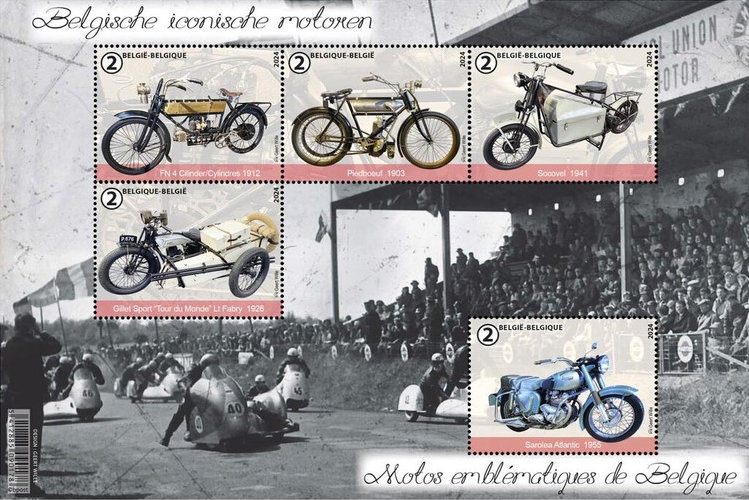
We see the start of an early (in years) sidecar race on the old circuit of Mettet, the Jules Tacheny circuit. This circuit was a street circuit and ran through the village, among other places.

From 1928 onwards, this circuit was used for racing cars and motorcycles. After several expansions and changes, the circuit was approximately 8 km long. Several major races were held on the circuit under the name Grand Prix, but in 1947 the sole right to this title was granted to Spa.
In 2010, a new permanent circuit was opened near the start of the old circuit, and today Circuit de Mettet has a full program. The picture used as a background dates from the seventies.
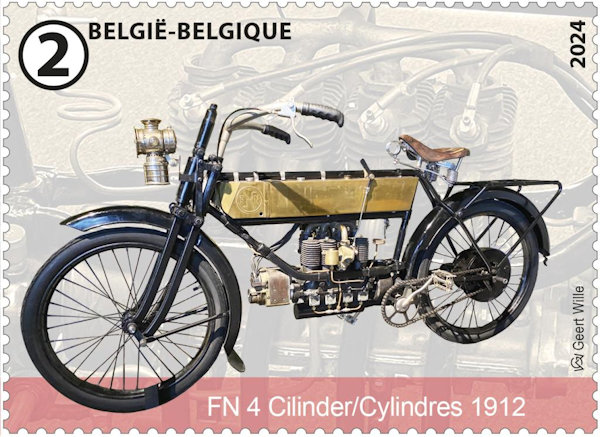
The motorcycle on the first stamp is probably familiar to you and is the FN4-cylinder from 1905. FN is the abbreviation of the name of the legendary arms manufacturer Fabrique National (in full: Fabrique Nationale d'Armes de Guerre - National War Weapon Factory). In addition to weapons, this factory also made various vehicles, including such motorcycles. In 1909, a two-speed gearbox was coupled to the machine and in 1912 this model was regarded the fastest motorcycle with 64 km/h.
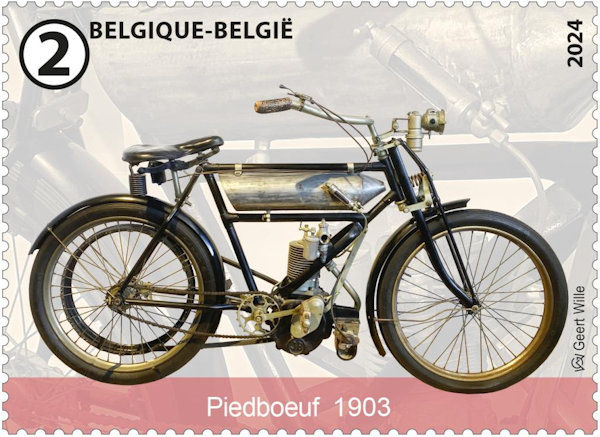
Piedboeuf is the name of a family from Liège who started building bicycles in 1902. Later they also made cars (under the name Imperia) and some types of motorcycles. These motorcycles had no gears and the intake valve worked atmospherically (the so-called "sniffing valve"), while the exhaust was an operated valve. Production was already stopped in 1905.
Nowadays Piedboeuf is the name of a beer brand of Inbev.
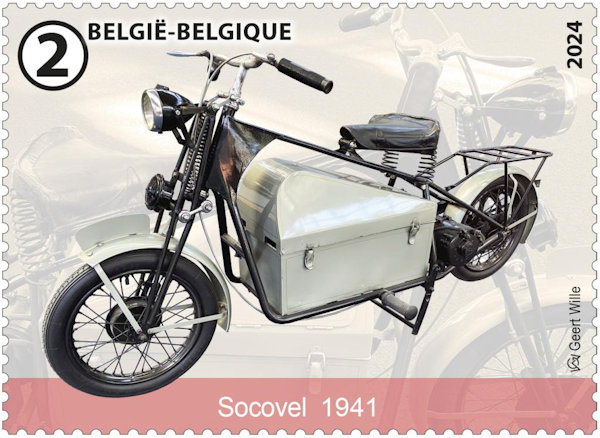
In 1938, the De Limelette brothers built motorcycles with four-stroke Coventry Victor boxer engines. Due to the threat of the Second World War, the brothers came up with an electrically powered motorcycle in 1939. The name of the factory was SOciété pour l'étude et la COnstruction de Vehicules ELectriques (company for design and construction of electric vehicles). A mouthful, which is why it was abbreviated to Socovel. During the war years, the company flourished due to the rationing of petrol. After the war years, the company returned to the production of motorcycles with 125 cc Villiers engines as a power source. A wide range of petrol-powered models followed, but the brand owes its great fame to the electric motorcycles, cargo bikes and sidecars that were made during the war years, with the approval of the occupying forces.
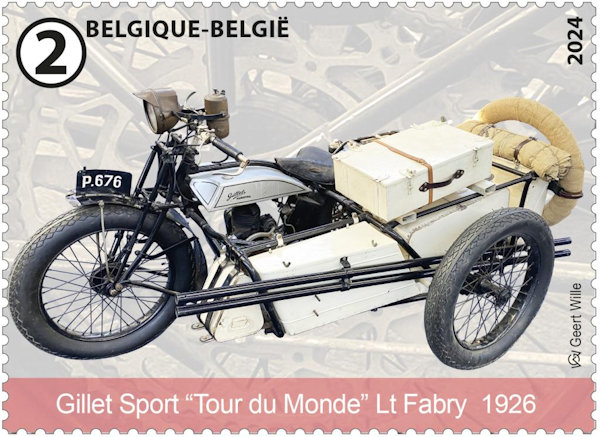
This Gillet is one of a kind. The "Tour du Monde" model was built for the pilot Robert Fabry, who as a pioneer went to explore a flight route to the Belgian colonies. He travelled some 20,000 km through the Sahara to find and describe suitable places for airfields. The 350 cc two-speed motorcycle covered the route Liège-Lumumbasie (Congo)-Liège in 1927 in about ten months.
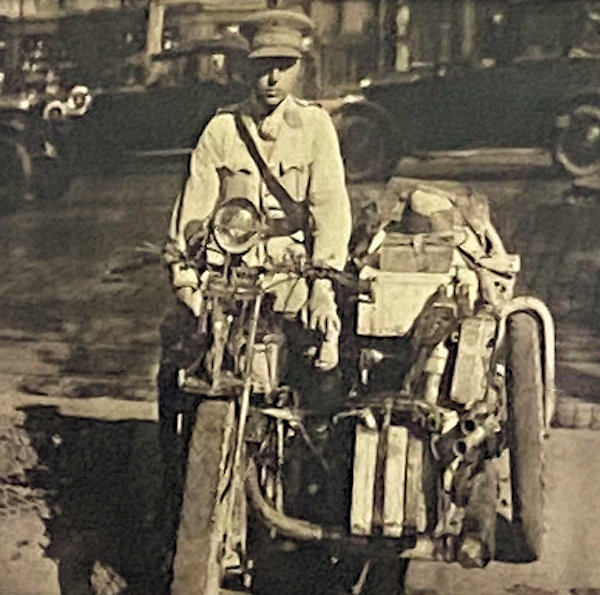
Gillet, also known as Gillet Herstal, is a manufacturer that built motorcycles from 1919 to 1958. Not only under its own name but also in so-called "badge engineering" with FN and Sarolea.
Well-known are the Royal Nord models that also rolled out of the doors of the Gillet factory.
Gillet became famous for manufacturing a double-piston engine with an extra crank pin to increase compression. This principle was later successfully adopted by DKW. On behalf of the army, several models were developed that could be equipped with a Belgian sidecar with powered sidecar wheel. Unfortunately, the designs were not ready in time for production, and the designs fell into enemy hands.
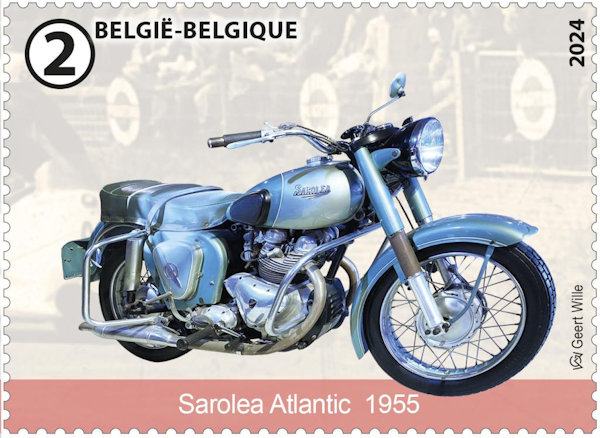
In 1852 Joseph Sarolea founded a small arms factory in Herstal. In 1892, he expanded production with a bicycle factory that made models for the army, among other things. The first Sarolea motorcycle appeared in 1900 and, because of their reliability, the engines were soon also used by many other motorcycle manufacturers. Some big names: Ariel, Chater Lea, Gazelle, Hercules, Thomas and Wilhelmina. The Sarolea Atlantic is powered by a two-cylinder 500 cc overhead valve engine. Due to its broad power curve, the engine was widely used in the sidecarcross world. A total of 382 units of the Atlantic petrol model were made.
Yes, petrol model, because nowadays the name Sarolea Atlantic is also linked to an electric racer that scores high in the Manx TT races, the Manx7.
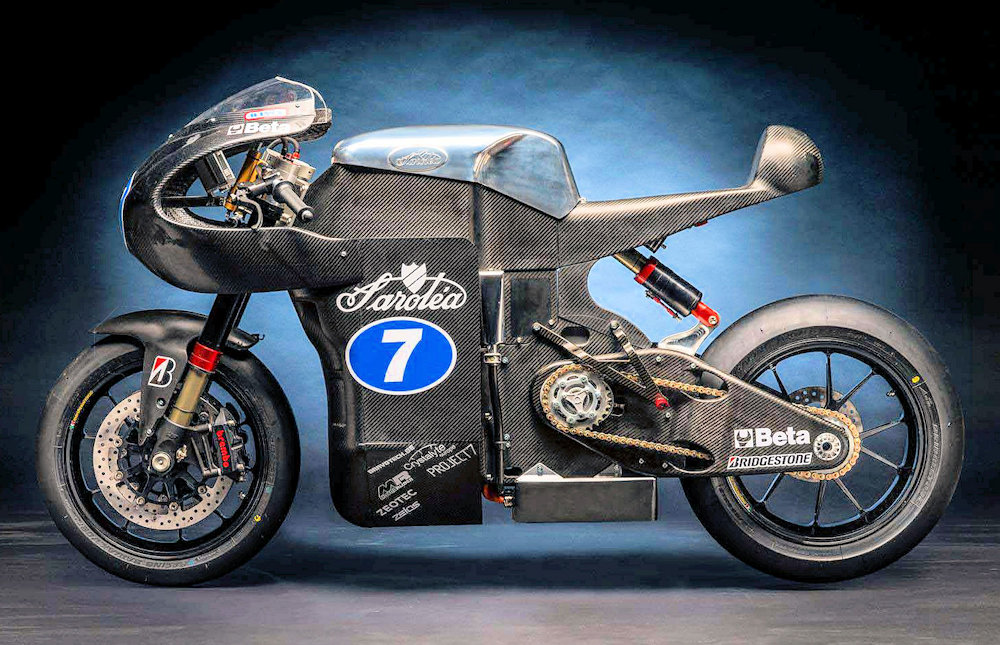
The block of five stamps issued on January 22, 2024 was designed by the Belgian Post's stamp designer, Geert Wille, and was offset printed by the post itself.
Hans de Kloet
Top - Back to former page - Home |








